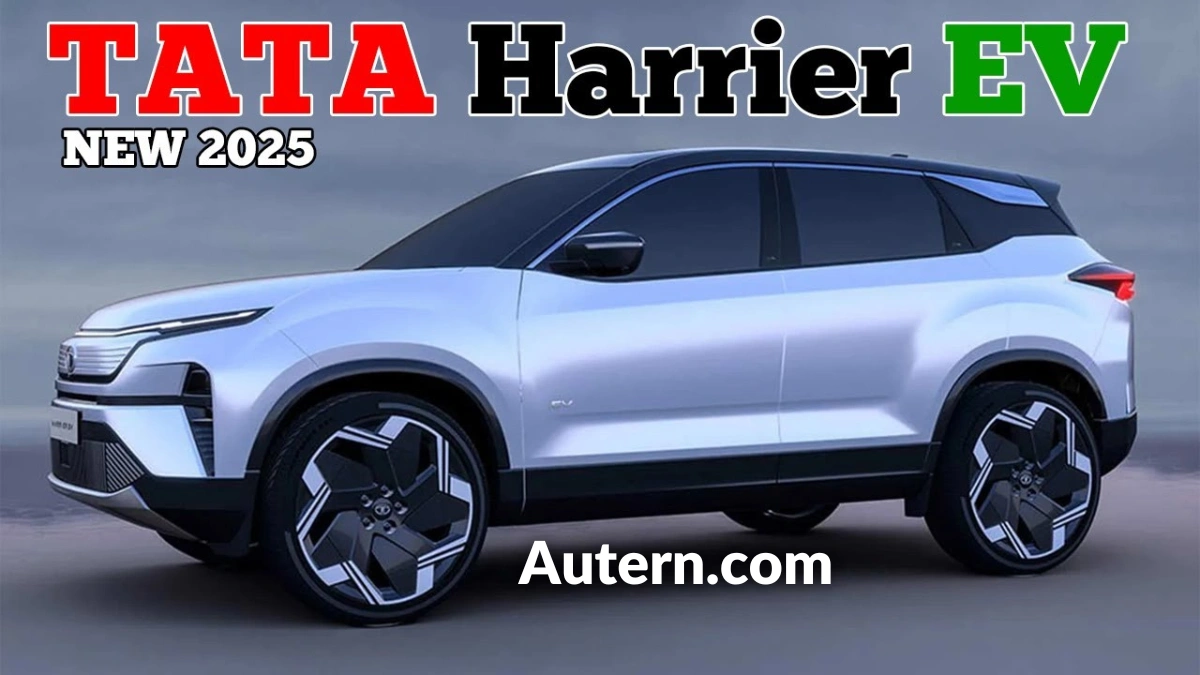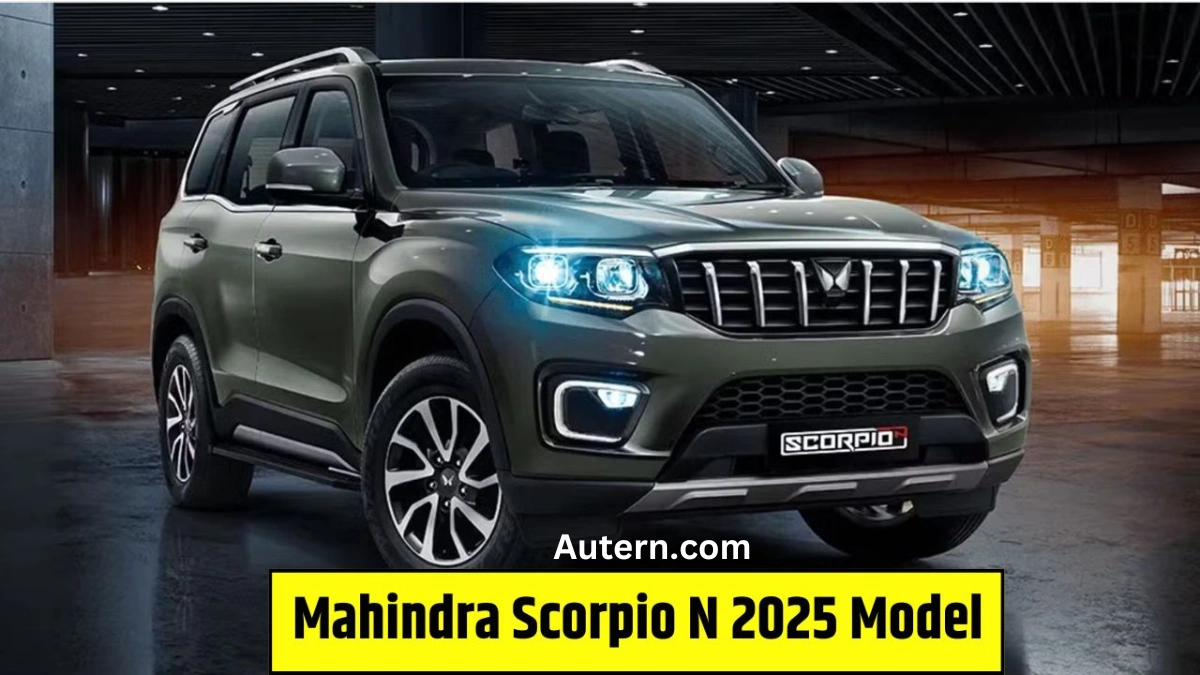India’s automotive landscape is undergoing a seismic shift toward electric mobility, and Tata Motors is at the forefront of this transformation. Known for its successful electric vehicles (EVs) like the Nexon EV and Tiago EV, Tata is now gearing up to launch the highly anticipated Tata Harrier EV 2025, a compact electric SUV that promises to redefine the segment. This isn’t just another addition to the Harrier lineup—it’s a bold step toward sustainable mobility, blending rugged SUV appeal with cutting-edge electric technology.
With its impressive range, modern features, and competitive pricing, the Tata Harrier EV 2025 is poised to be a game-changer in India’s EV market. In this comprehensive guide, we’ll explore its launch timeline, standout features, price projections, advantages for Indian consumers, comparisons with competitors, and its potential to reshape electric mobility.
Tata Harrier EV 2025 Launch Timeline
The Tata Harrier EV 2025 is slated for a grand debut in late 2025 or early 2026, marking a significant milestone in Tata Motors’ journey toward sustainable transportation. While an official announcement is still pending, industry insiders and automotive enthusiasts are buzzing with excitement about its arrival. This timeline aligns with Tata’s ambitious goal to expand its EV portfolio and make electric mobility accessible to a broader Indian audience. Initially targeting the Indian market—where Tata enjoys a strong foothold—the Harrier EV could also make waves in international markets like Southeast Asia and Europe, where demand for compact SUVs is surging.
Tata Motors has long been a dominant player in India’s automotive industry, and the Harrier EV 2025 underscores its commitment to electrification. By offering an affordable yet premium electric SUV, Tata aims to accelerate India’s transition to greener transportation, catering to both urban commuters and eco-conscious buyers. For more insights into India’s evolving automotive trends, check out our review of the Mahindra Scorpio N 2025, another SUV set to make waves.
Key Features of the Tata Harrier EV 2025
The Tata Harrier EV 2025 combines striking design, robust performance, and advanced technology, making it a standout in the electric SUV segment. Here’s a closer look at what it brings to the table:
Exterior and Interior Design
Drawing inspiration from its internal combustion engine (ICE) counterpart, the Harrier EV 2025 boasts a bold, modern aesthetic tailored for the electric era. Expect sleek LED headlights, aerodynamic body lines, and EV-specific design elements like a closed-off grille and aero-optimized alloy wheels. Inside, the cabin promises a spacious, luxurious experience with premium materials and a tech-forward layout. A digital instrument cluster, high-quality upholstery, and innovative storage solutions will elevate comfort and convenience, appealing to buyers seeking both style and practicality. For a comparison with another stylish SUV, explore the Maruti Suzuki Fronx 2025.
Performance and Powertrain
At the heart of the Harrier EV 2025 lies a robust electric powertrain. Equipped with a 50-70 kWh battery pack, it’s expected to deliver a driving range of 400-500 km on a single charge—ideal for city commutes and weekend getaways. The electric motor, likely producing 200-250 horsepower, strikes a balance between performance and efficiency. With a top speed of around 180 km/h and a 0-100 km/h acceleration time of 7-8 seconds, this SUV offers an exhilarating drive. Fast-charging capabilities will allow it to reach 80% capacity in just 45 minutes using DC chargers, a boon for time-pressed drivers. Curious about performance-driven vehicles? Take a look at the Toyota Fortuner 2025.
Technology and Connectivity
Modern drivers demand seamless connectivity, and the Harrier EV 2025 delivers. A 10-inch touchscreen infotainment system will support Apple CarPlay, Android Auto, and Tata’s SmartConnect technology, keeping passengers entertained and informed. Features like over-the-air (OTA) software updates, remote vehicle monitoring, and smart app integration will enhance the driving experience, ensuring the SUV stays ahead of the curve. For tech-savvy buyers, the Kia Carens 2025 offers a similar focus on advanced connectivity.
Safety Features
Safety is a top priority for Tata Motors, and the Harrier EV 2025 will come equipped with advanced systems like Anti-lock Braking System (ABS), Electronic Stability Control (ESC), multiple airbags, rear parking sensors, and a 360-degree camera. These features provide peace of mind, making it a reliable choice for families and solo travelers alike.
Eco-Friendly Credentials
As a zero-emission vehicle, the Harrier EV 2025 aligns with India’s push for sustainable mobility. By reducing carbon footprints and urban pollution, it caters to environmentally conscious consumers eager to contribute to a cleaner future. For another eco-friendly option, see our analysis of the Toyota Hyryder 2025.
Price Projections for Tata Harrier EV 2025 in India
Pricing is a critical factor in the EV market, and Tata Motors is expected to position the Harrier EV 2025 competitively. The estimated price range starts at around ₹20 lakh (ex-showroom) and could climb higher depending on variants and features. This makes it an affordable yet premium option in the electric SUV category, appealing to both first-time EV buyers and urban professionals.
Compared to rivals like the Tata Nexon EV, MG ZS EV, and Hyundai Kona Electric, the Harrier EV offers superior value for money with its larger size, advanced features, and competitive pricing. Additionally, government incentives—such as subsidies under the FAME II scheme, GST reductions, and tax exemptions—will further lower the effective cost, enhancing its appeal. With lower running costs (electricity vs. fuel) and minimal maintenance needs, the Harrier EV 2025 promises long-term savings, making it an economical choice for budget-savvy buyers. For affordable commuting options, check out the Bajaj Platina 125 2025.
Advantages for Indian Consumers
The Tata Harrier EV 2025 is tailor-made for the Indian market, offering a host of benefits that resonate with local needs:
- Affordable Electric Mobility: It brings premium SUV features to the mass market at a reasonable price point, democratizing EV ownership.
- Versatility: With ample ground clearance and a compact footprint, it’s perfect for navigating crowded urban streets and tackling highway journeys.
- Cost Efficiency: Energy-efficient operation and low maintenance costs outshine traditional petrol or diesel SUVs.
- Sustainability: Zero-emission driving supports India’s environmental goals, improving air quality in polluted cities.
- Government Support: Incentives and expanding charging infrastructure make it an attractive investment.
These advantages position the Harrier EV as a practical, forward-thinking choice for Indian consumers seeking value and eco-friendliness.
Tata Harrier EV 2025 vs. Competitors: A Detailed Comparison
To understand its market standing, let’s compare the Tata Harrier EV 2025 with key competitors in a table format:
| Feature | Tata Harrier EV 2025 | Tata Nexon EV | MG ZS EV | Hyundai Kona Electric |
|---|---|---|---|---|
| Price (₹ Lakh) | 20-30 (estimated) | 14-20 | 21-25 | 23-25 |
| Range (km) | 400-500 | 300-400 | 419 | 452 |
| Battery (kWh) | 50-70 | 40.5 | 50.3 | 39.2 |
| Power (hp) | 200-250 | 142 | 174 | 134 |
| Charging Time (DC) | 45 min (0-80%) | 60 min (0-80%) | 50 min (0-80%) | 54 min (0-80%) |
| Seating Capacity | 5 | 5 | 5 | 5 |
| Key Features | AWD, ADAS, 10-inch screen | 7-inch screen, sunroof | Panoramic sunroof, ADAS | Leather seats, HUD |
The Harrier EV stands out with its superior range, power, and all-wheel-drive (AWD) option, making it a more robust choice than the Nexon EV. Against the MG ZS EV and Hyundai Kona Electric, it offers a larger cabin and advanced features at a potentially lower price, giving it an edge in the premium compact SUV segment. Globally, it competes with models like the Dacia Spring EV and Renault Zoe, but its India-specific design and pricing give it a unique advantage.
Pros and Cons of the Tata Harrier EV 2025
Here’s a balanced look at the strengths and weaknesses of the Tata Harrier EV 2025 in table format:
| Pros | Cons |
|---|---|
| Affordable electric SUV under ₹30 lakh | Limited range for long highway trips |
| Zero-emission, eco-friendly driving | Higher price than smaller EVs |
| Impressive 400-500 km range | May lack some luxury features |
| Strong brand with extensive support | Charging infrastructure still growing |
| Advanced tech and safety features |
The Harrier EV excels in affordability, range, and sustainability, backed by Tata’s trusted service network. However, its range may fall short for extensive highway travel compared to higher-end performance EVs, and it might not include ultra-luxury features found in pricier models.
Why the Tata Harrier EV 2025 Could Be a Game-Changer
The Tata Harrier EV 2025 blends premium features with budget-friendly pricing, making it accessible to a wide audience. Its compact SUV design caters to urban lifestyles while embracing electric innovation, a perfect fit for India’s evolving market. Tata Motors’ deep understanding of Indian roads, coupled with its extensive dealership network, ensures seamless support and service—a key differentiator. By paving the way for scalable, eco-friendly mobility, this SUV reflects global trends while addressing local needs, positioning it as a trailblazer in the electric SUV space. For another innovative vehicle, read about the TVS Apache 2025.
External Resources for More Insights
For additional details, check out this authoritative source: Tata Harrier EV Overview by CarWale.
Conclusion
The Tata Harrier EV 2025 is set to disrupt the electric SUV market with its compelling mix of style, performance, and affordability. Whether you’re a first-time EV buyer, an urban commuter, or an eco-warrior, this vehicle offers something for everyone. With its launch expected in late 2025 or early 2026, anticipation is building for what could be a defining moment in India’s electric mobility revolution. Stay tuned and get ready to embrace the future with the Tata Harrier EV 2025—a vehicle that’s not just a mode of transport, but a statement of progress. For more automotive updates, explore our review of the Yamaha YZF R15 2025.













sk2qz6